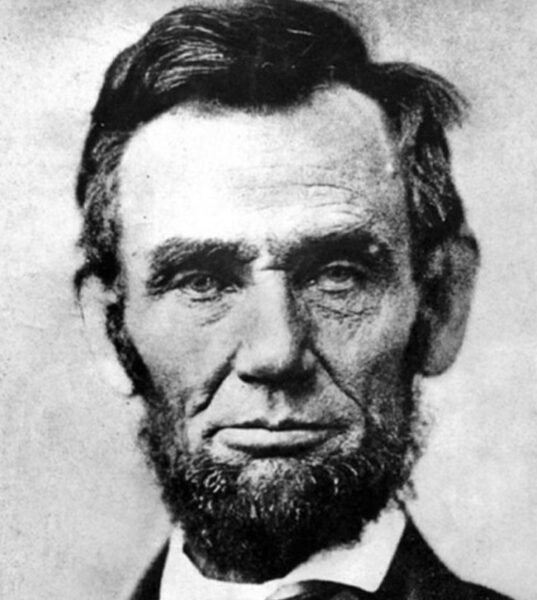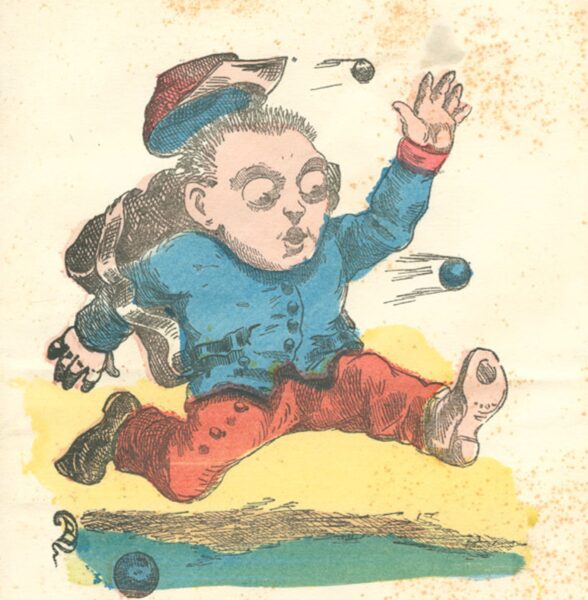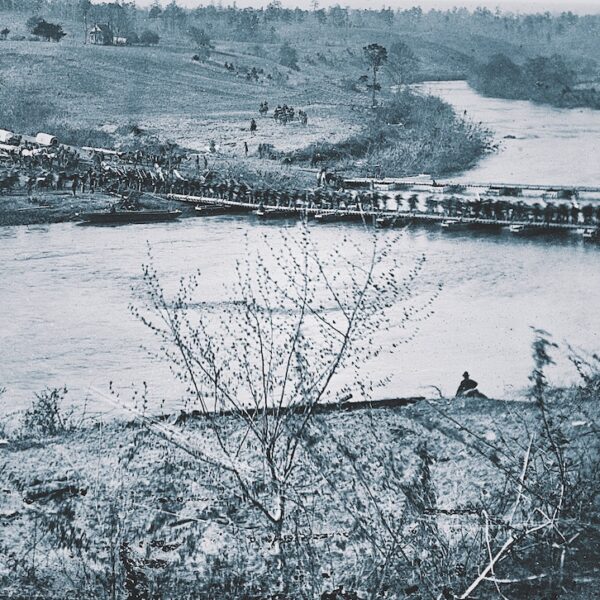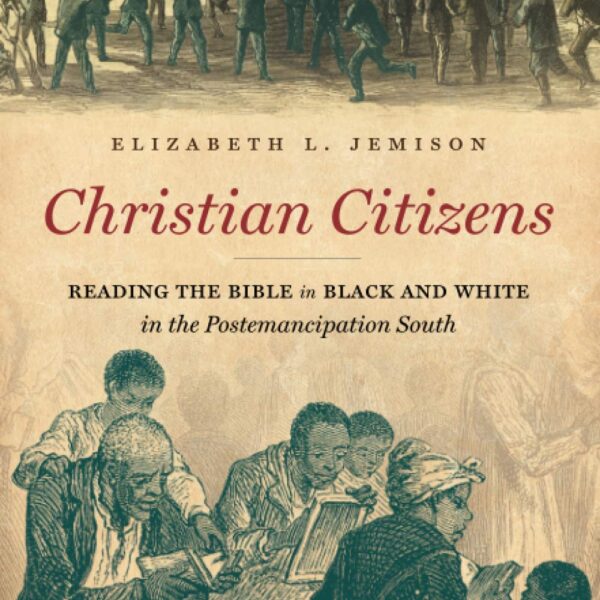On January 1, 1863, the Emancipation Proclamation—which declared “that all persons held as slaves” within the rebellious states “are, and henceforward shall be free”—went into effect. Drafted the previous summer, and announced shortly after the Union victory at the Battle of Antietam, the proclamation—an executive order issued by Abraham Lincoln—changed the legal status of enslaved people in the Confederacy, and effectively transformed the Union army into a force for libertation. The enactment of the proclamation inspired numerous artists to celebrate the document, its effects, and Lincoln. Below are some examples, all courtesy of the Library of Congress.
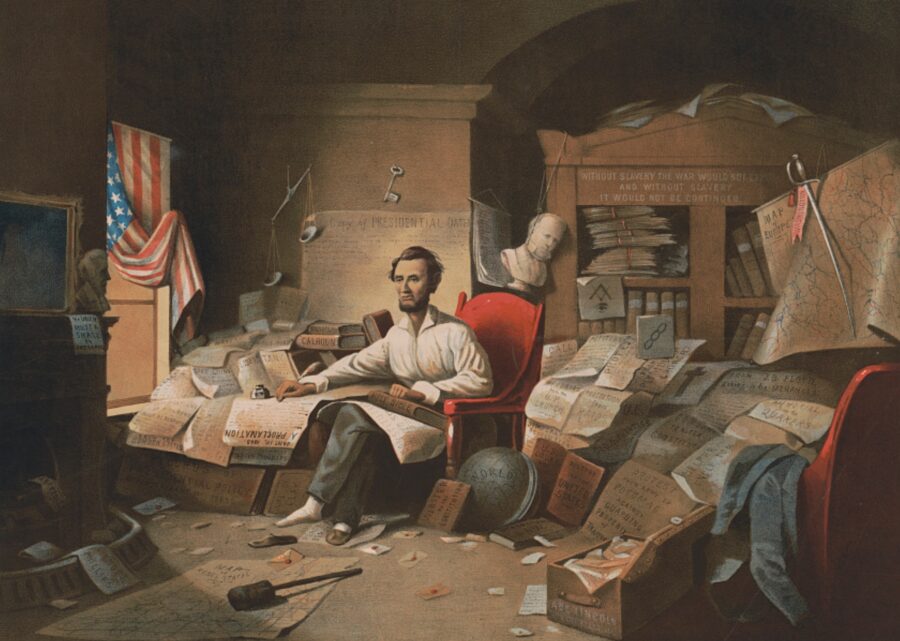
In this 1863 painting by David Gilmour Blythe, Lincoln, his left hand on the Bible, drafts the Emancipation Proclamation in his cluttered office.
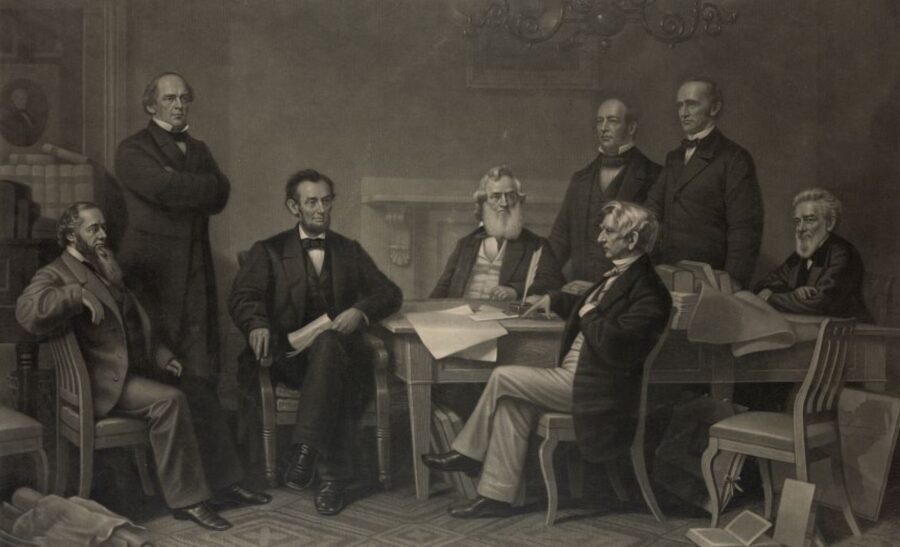
In this engraving of an 1864 painting by Francis B. Carpenter, Lincoln reads a draft of the Emancipation Proclamation to his cabinet in September 1862.
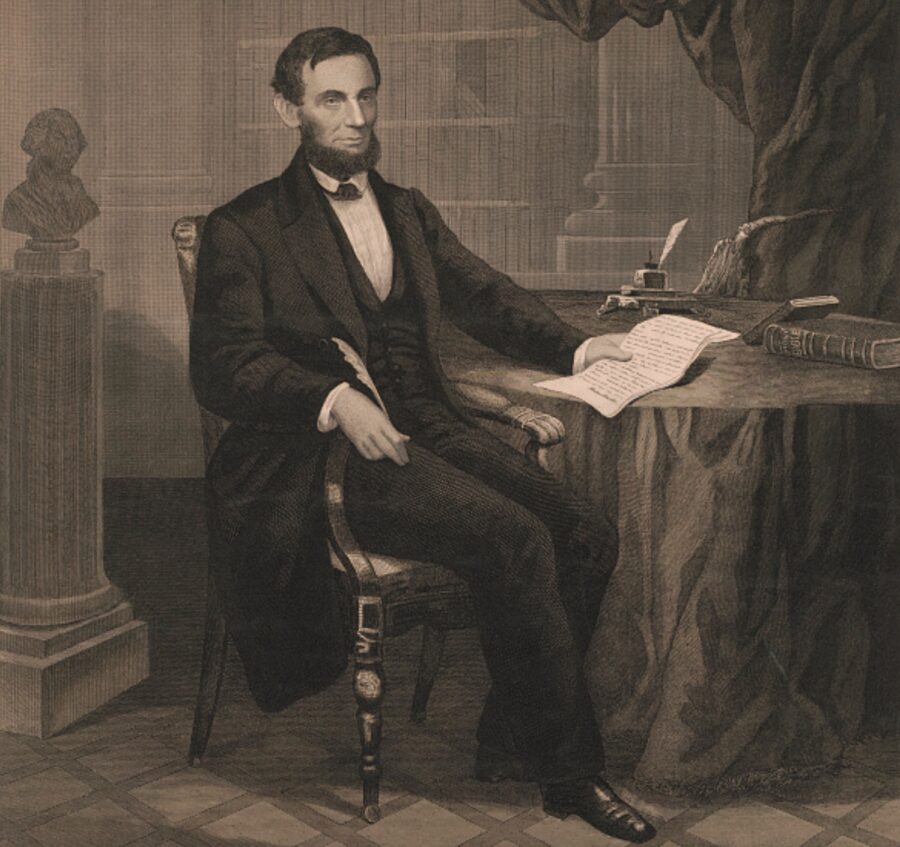
A solitary Lincoln signs the proclamation in this 1864 work by William E. Winner.
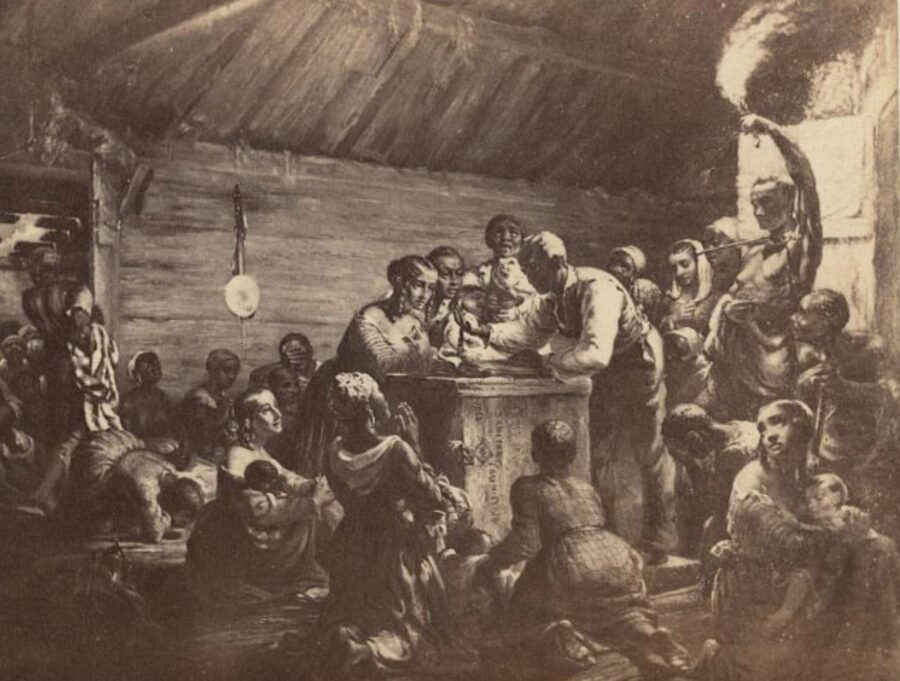
Enslaved men, women, and children gather around a man with a watch on the evening of December 31, 1862, as they wait for the Emancipation Proclamation to take effect.
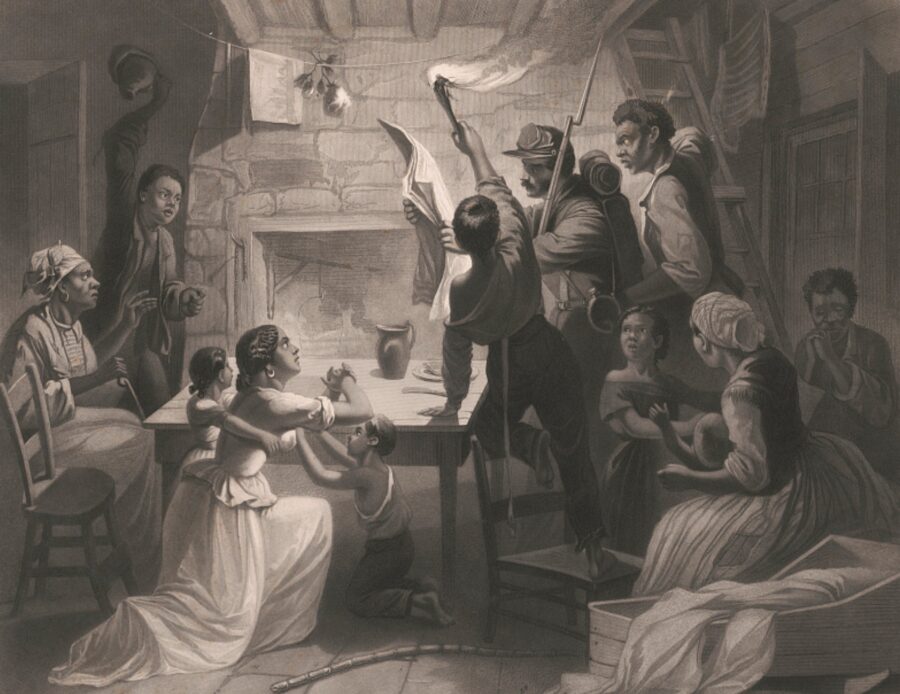
A Union soldier reads the Emancipation Proclamation to an enslaved family, informing them that they are free.
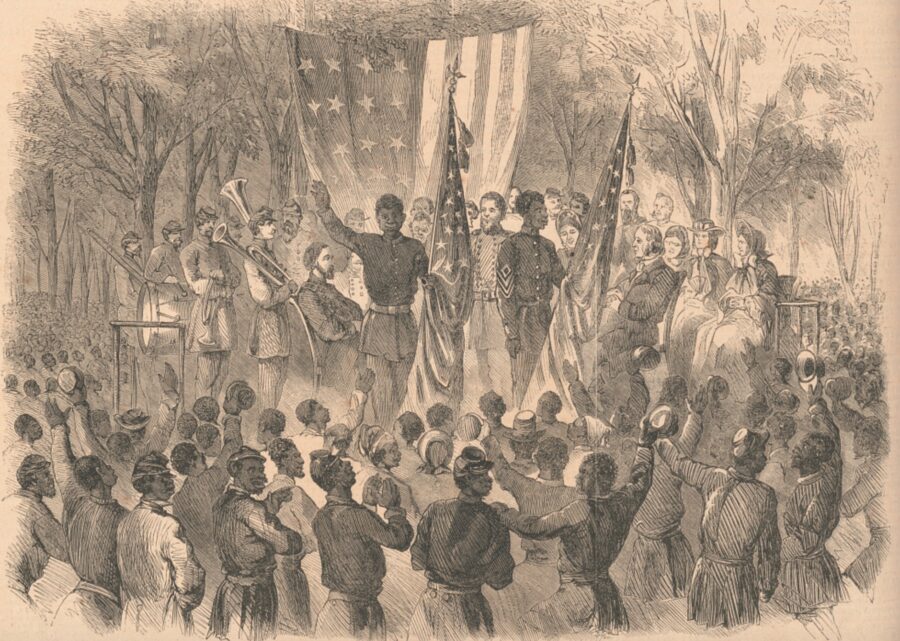
In this illustration from Frank Leslie’s Illustrated Newspaper, members of the 1st South Carolina Infantry’s color guard address a crowd of African Americans after a reading of the Emancipation Proclamation on January 1, 1863.
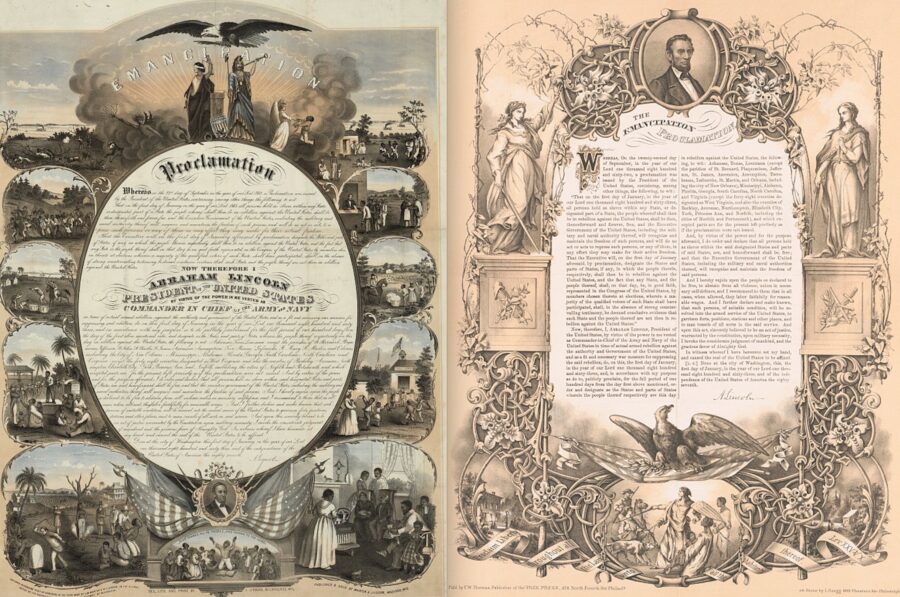
In the months that followed the issuance of the Emancipation Proclamation, numerous publishers created elaborate prints to commorate the event, including these from 1864 (left) and 1863.
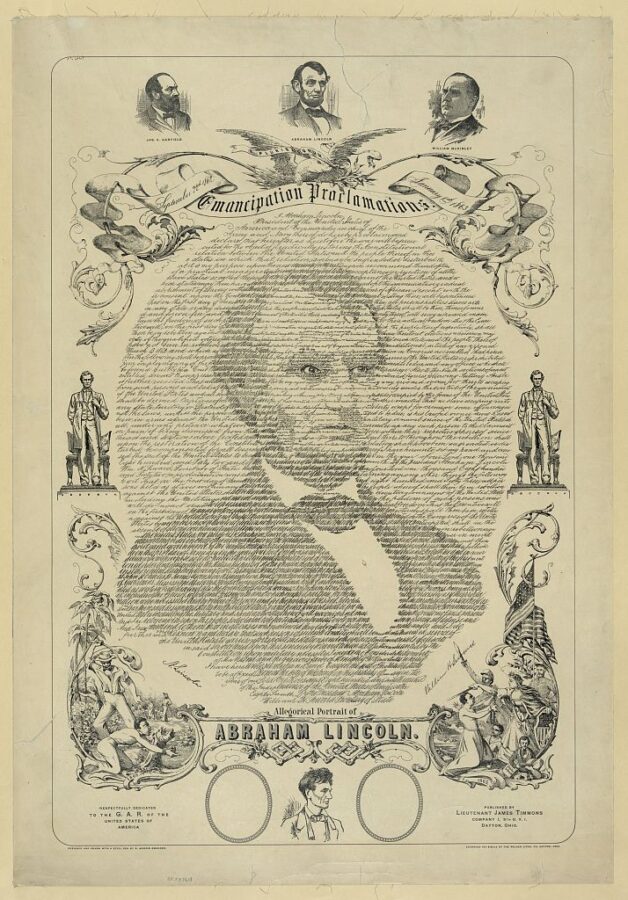
Among the more elaborate commemorative prints was this one, published after the war, in which the proclamation’s words were used to create a portrait of Lincoln.
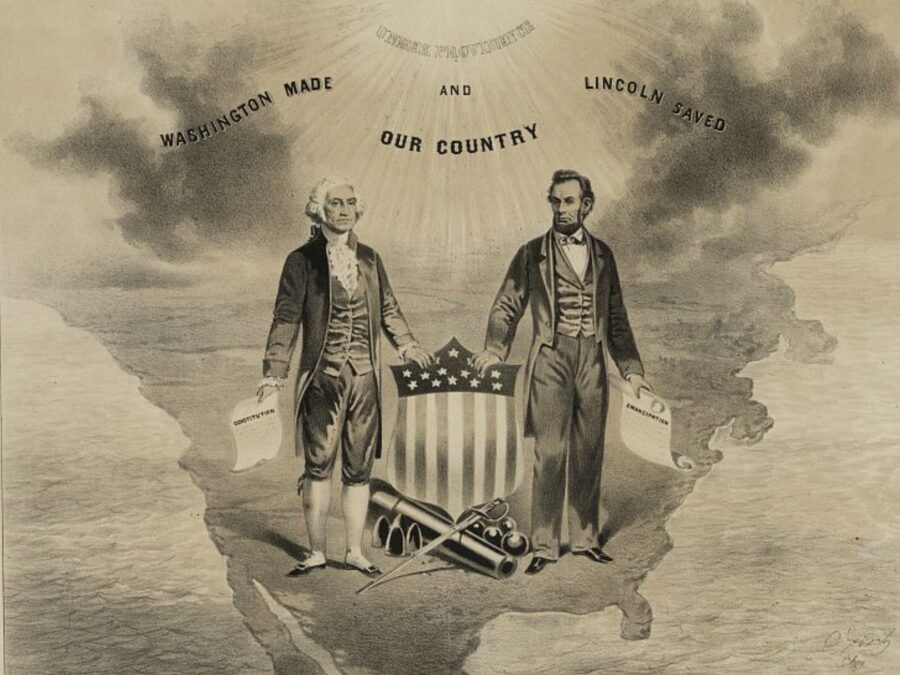
To many Americans, Lincoln’s presidency was linked to the Emancipation Proclamation. In this 1865 print, published not long after Lincoln’s assassination, George Washington and Lincoln are portrayed as “the greatest among men.” Washington holds the Constitution, Lincoln the Emancipation Proclamation.
Related topics: Abraham Lincoln, emancipation

